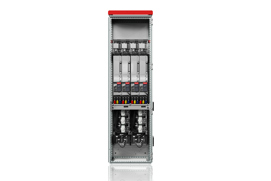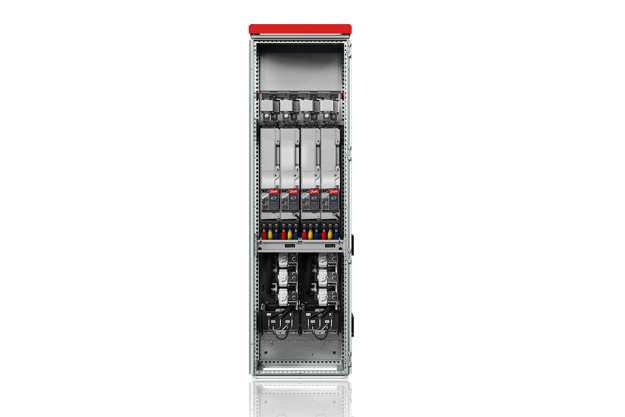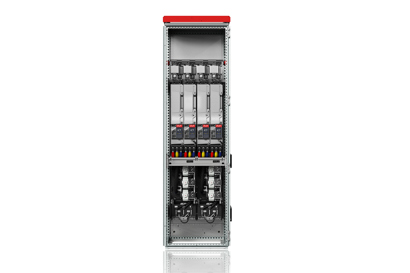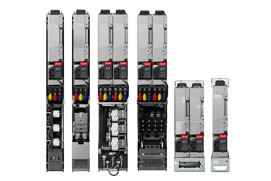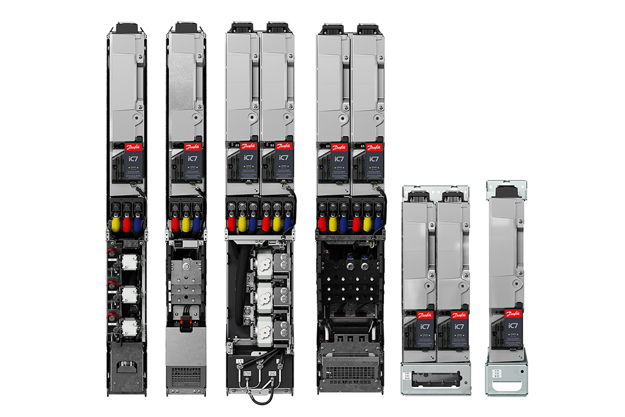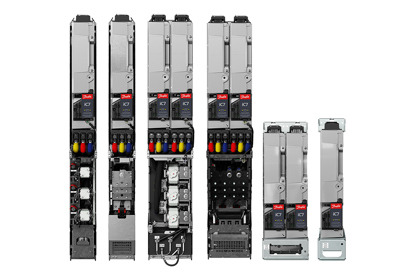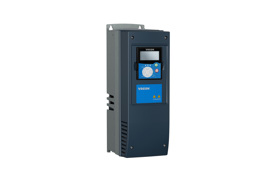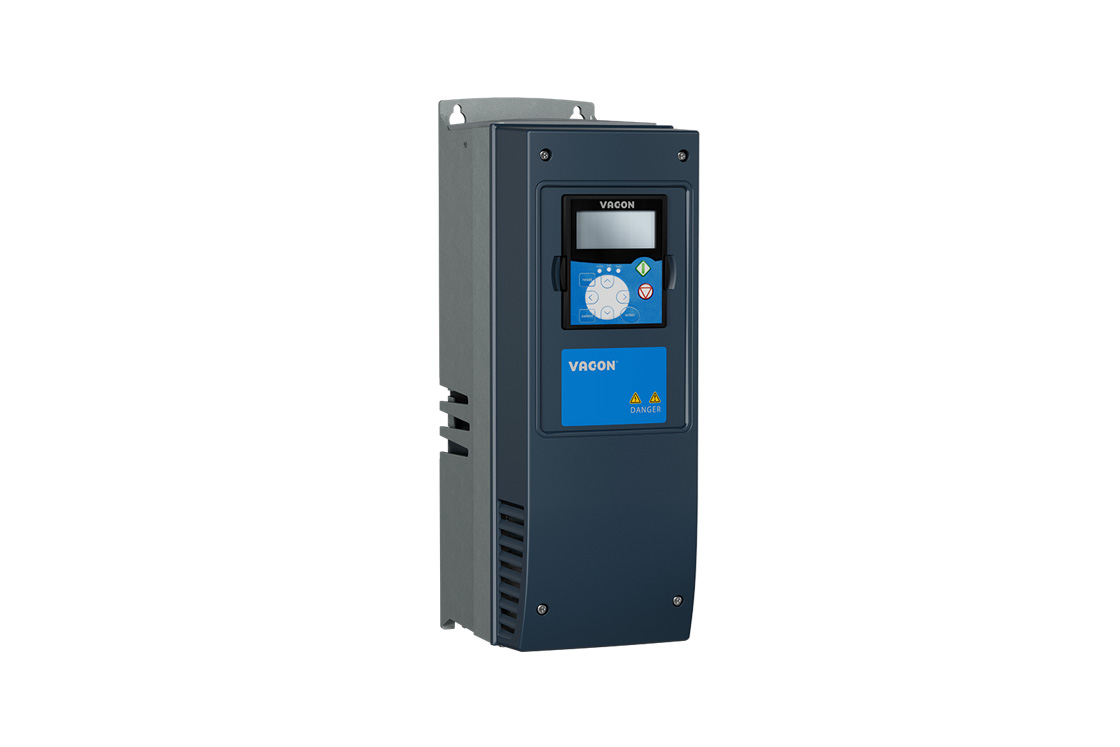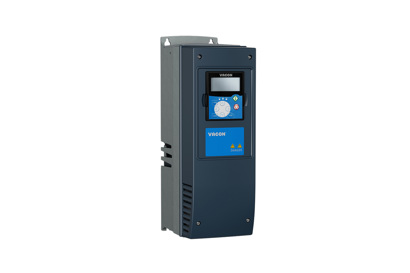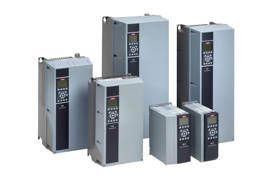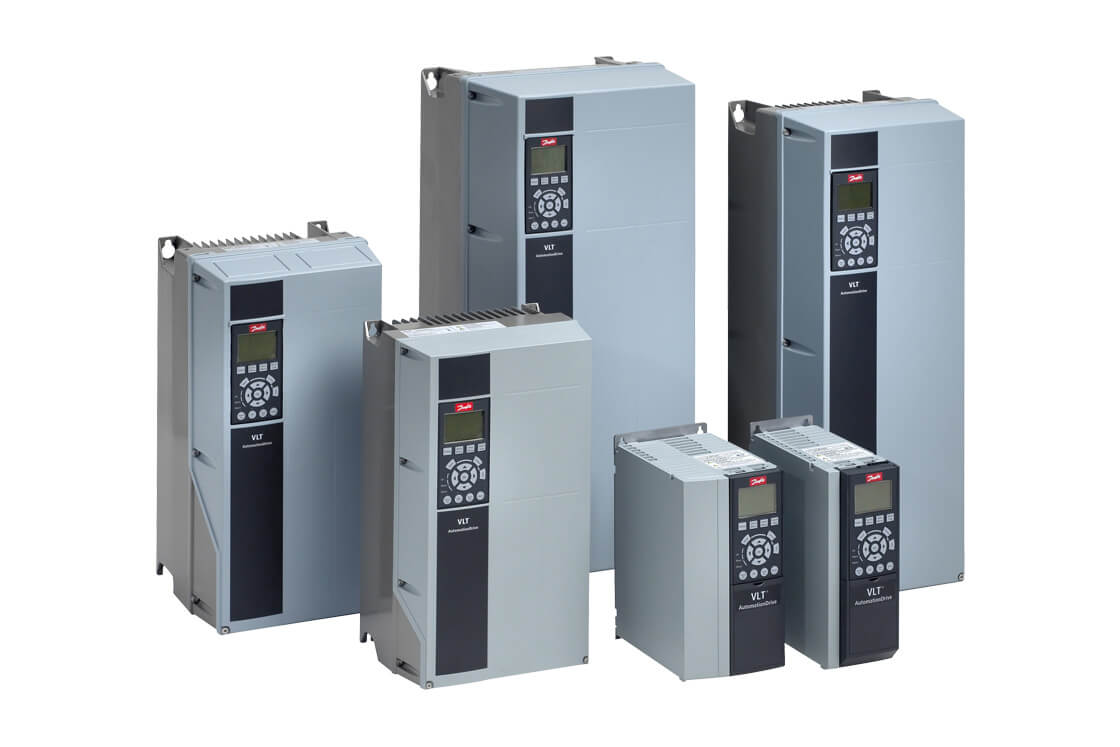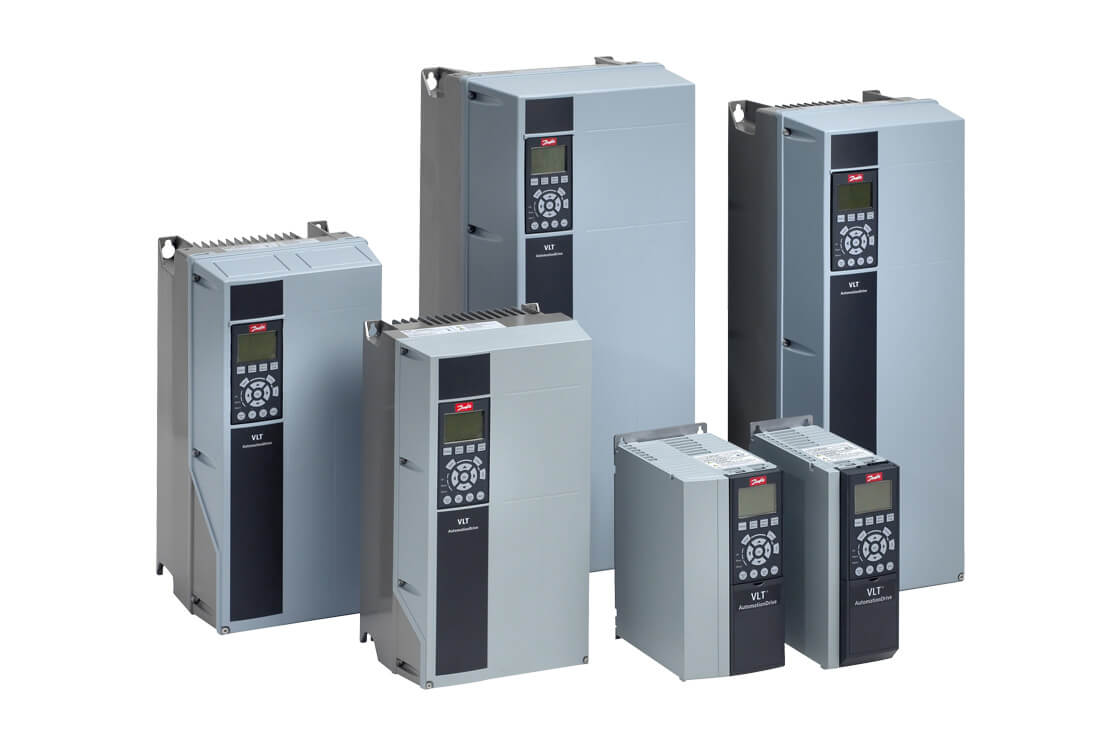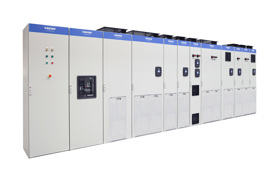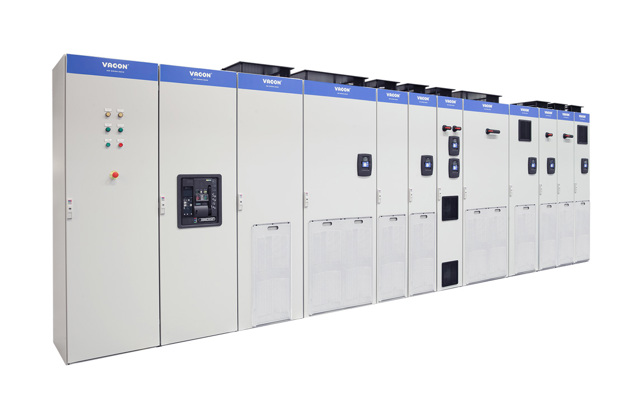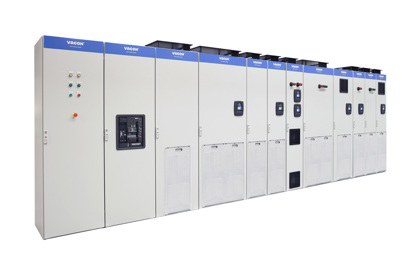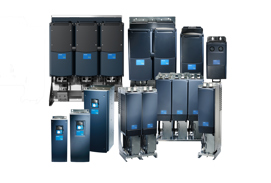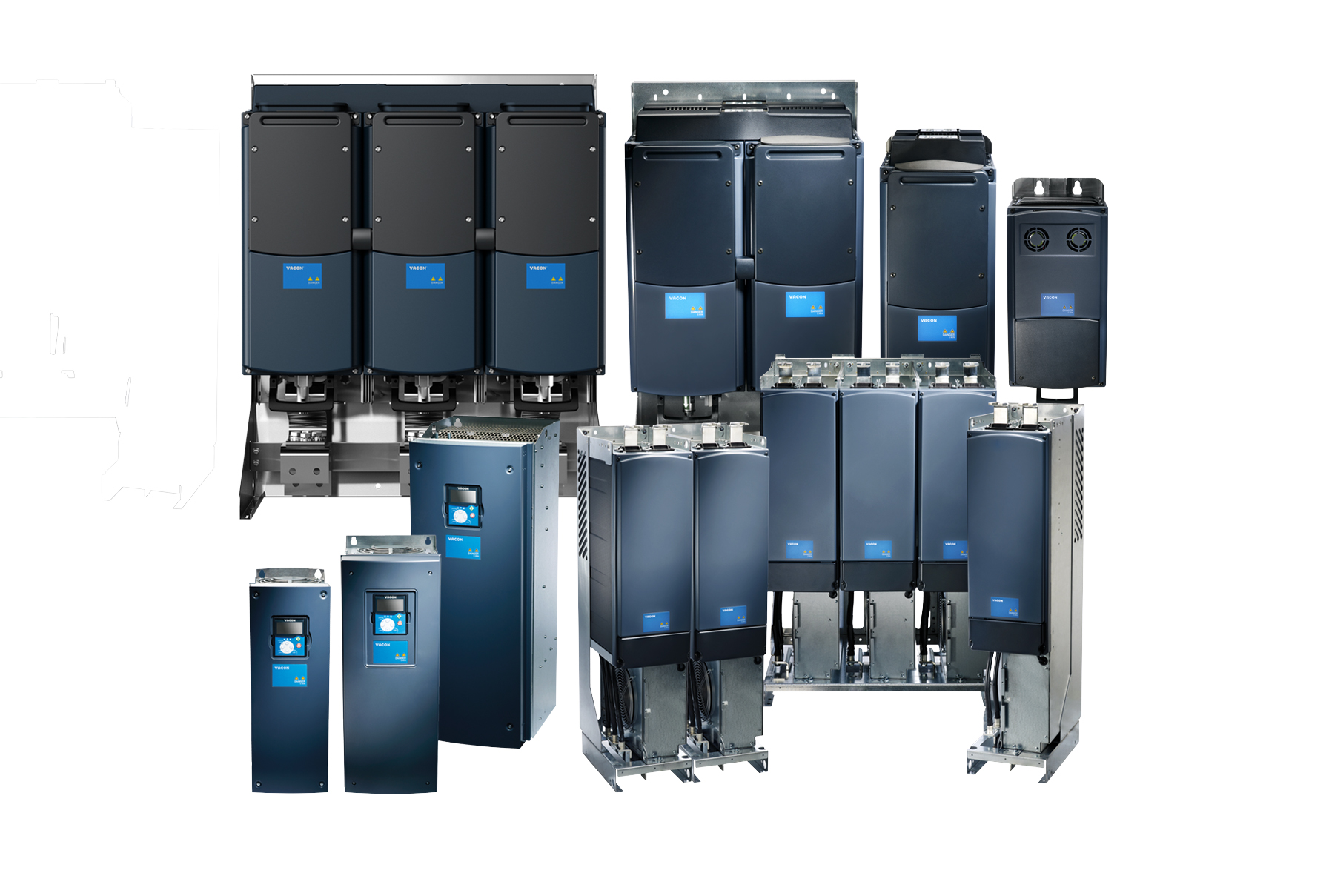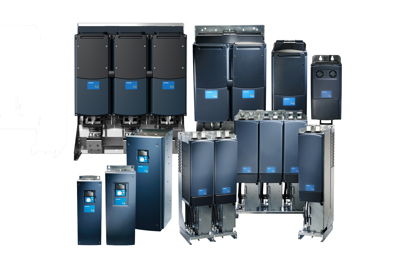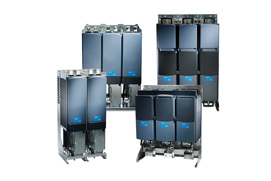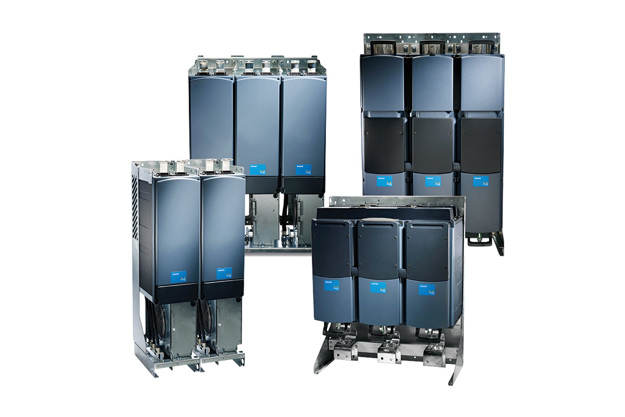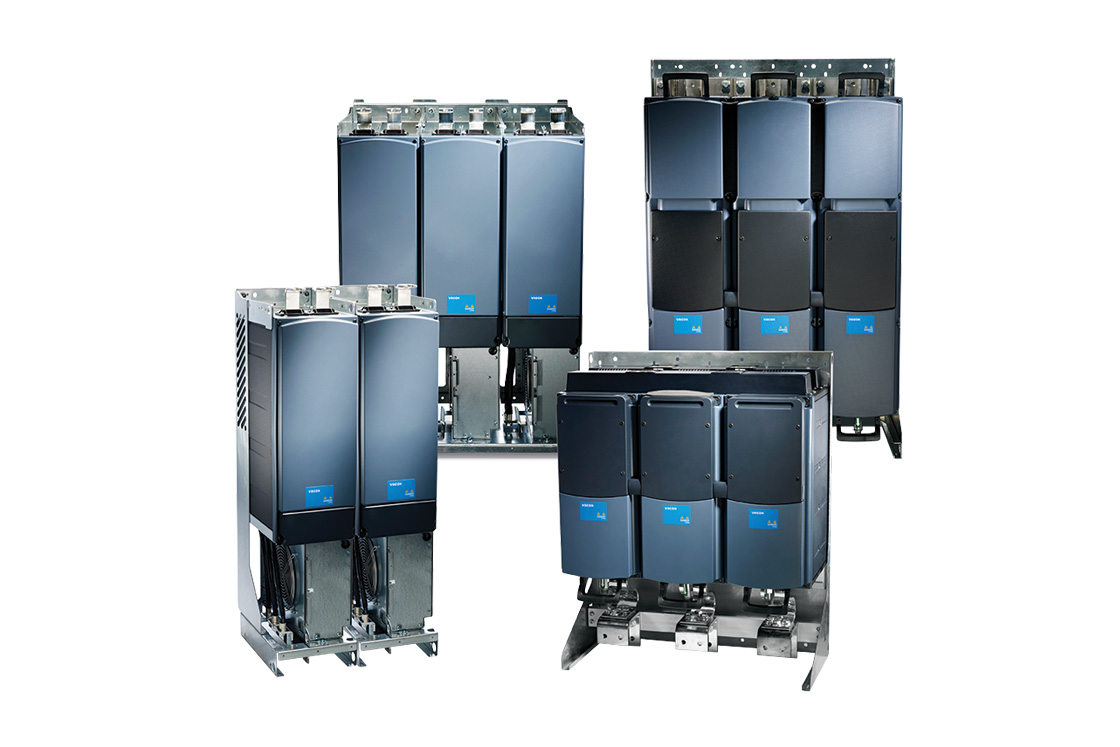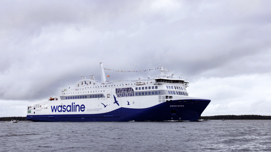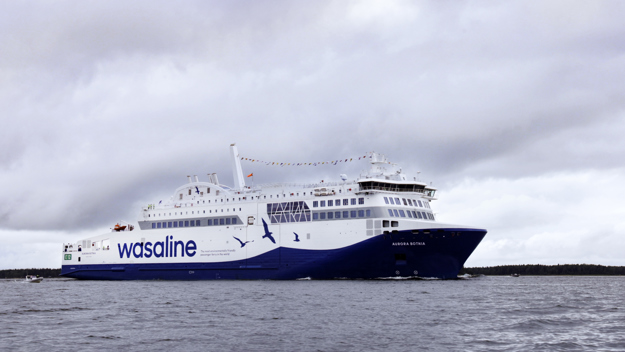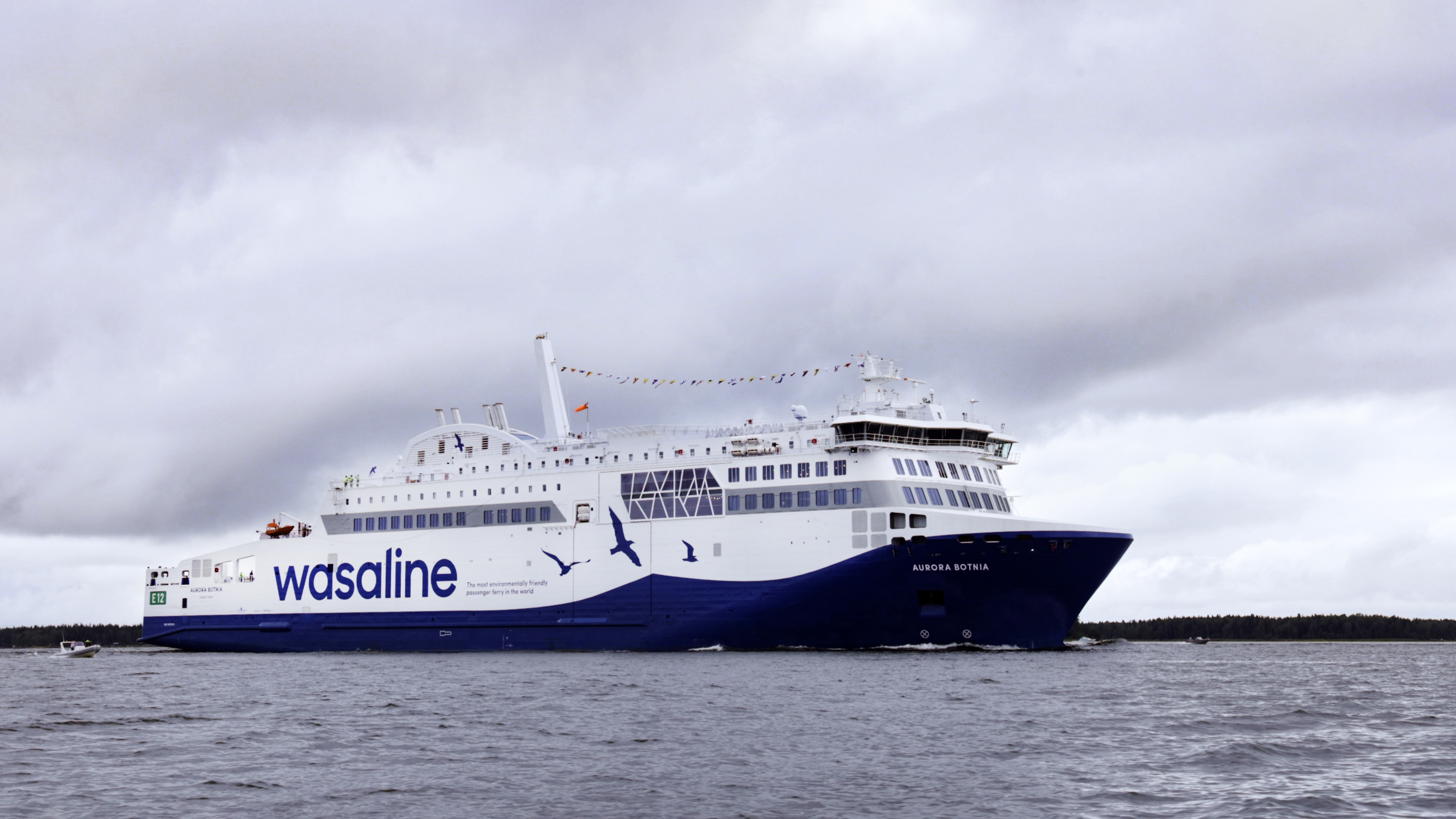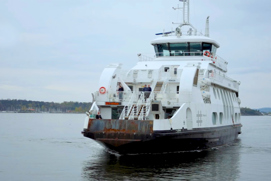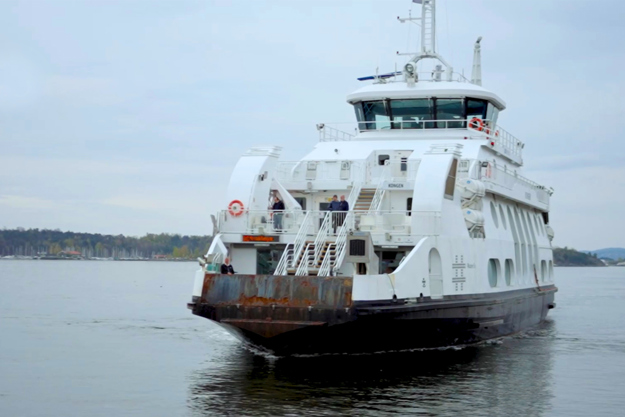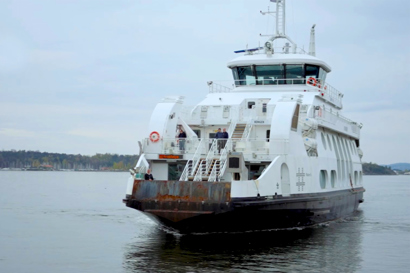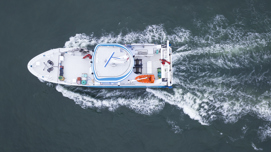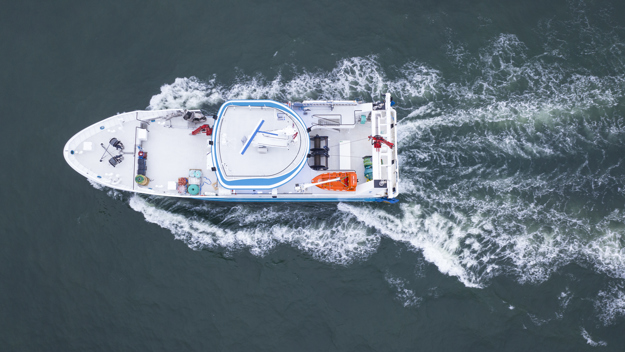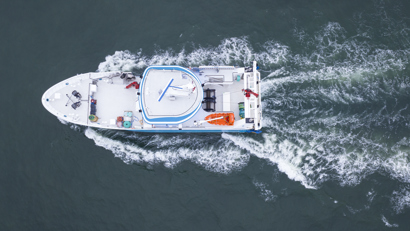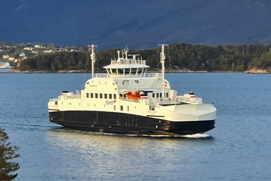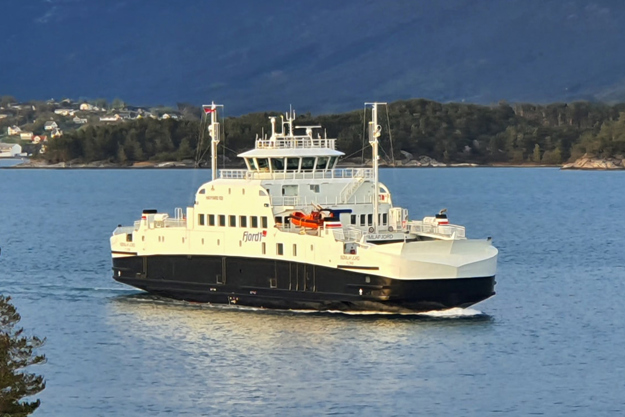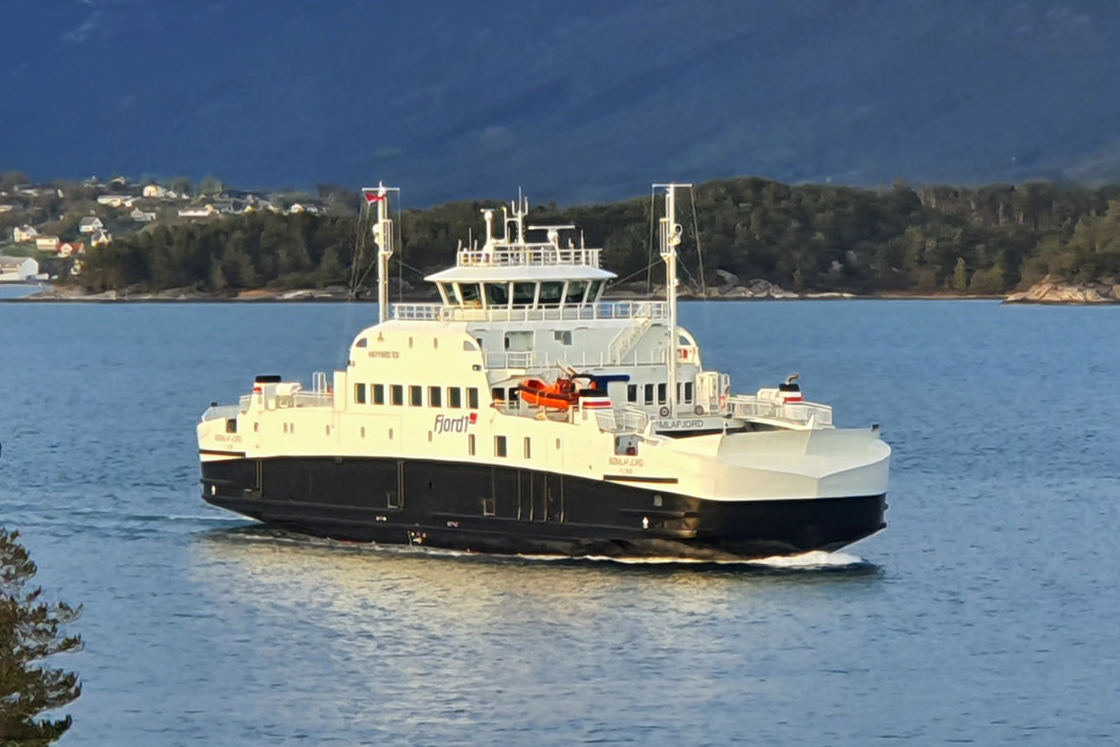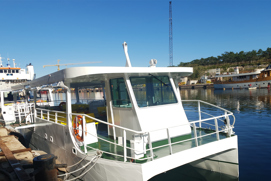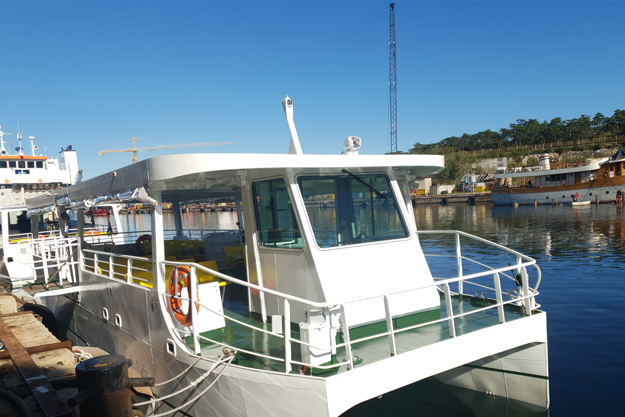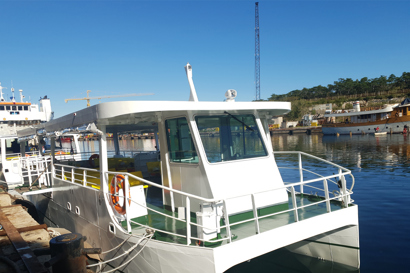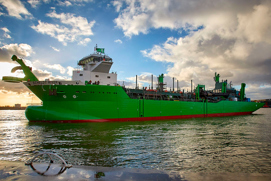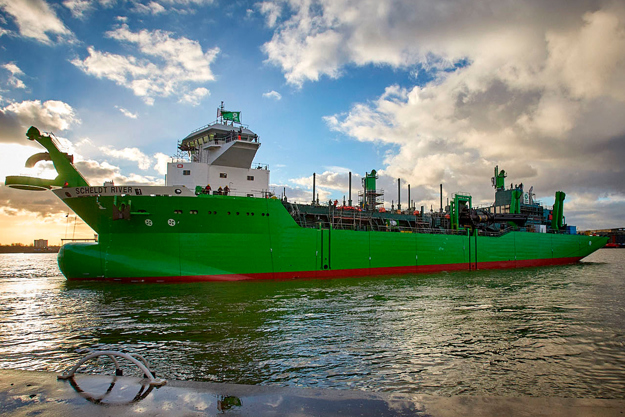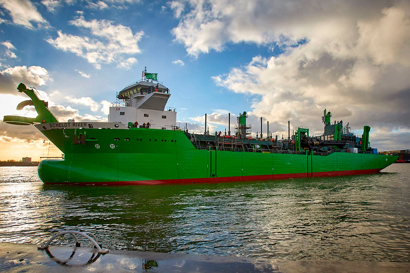Excellence in electric main propulsion
Electric-based main propulsion provides a great deal of freedom in ship design, and ships can be designed much more efficiently without the traditional limits on equipment layout, due to mechanical restrictions.
Benefits of electric propulsion:
- The power can be supplied by any number of generators, which enables high redundancy
- The motor + drive combination consumes energy only when the azimuth thruster is actively turned
- The environment benefits from lower fuel consumption and exhaust gas emission levels
- Electric propulsion is a good platform for the next phase of development – hybridization.
Generally speaking, the design of vessels with modern electric propulsion systems, either diesel electric, LNG electric or even fully electric, can be quite easily converted to a hybrid solution. In the best case, just by adding a parallel E-Storage system, a vessel can be operated utilizing battery power for example for peak power demand. In some cases, the optimum solution is to use DC power distribution instead of, or in conjunction with, traditional AC power distribution.
Danfoss Drives’ solutions for the marine and offshore industry have the highest number of class type approvals from nine authorities: DNV-GL, ABS, Bureau Veritas, Korean Register, CCS, RINA, Lloyds Register, RMRS and Class NK.
This gives you the best possible choice when selecting drives for your marine application.

Competitive electrification through power conversion
When integrating diverse energy sources into the grid, intelligent power conversion solutions from Danfoss improve grid performance whilst reducing CAPEX. Check out our approach, helping you achieve more efficient and competitive electrification.
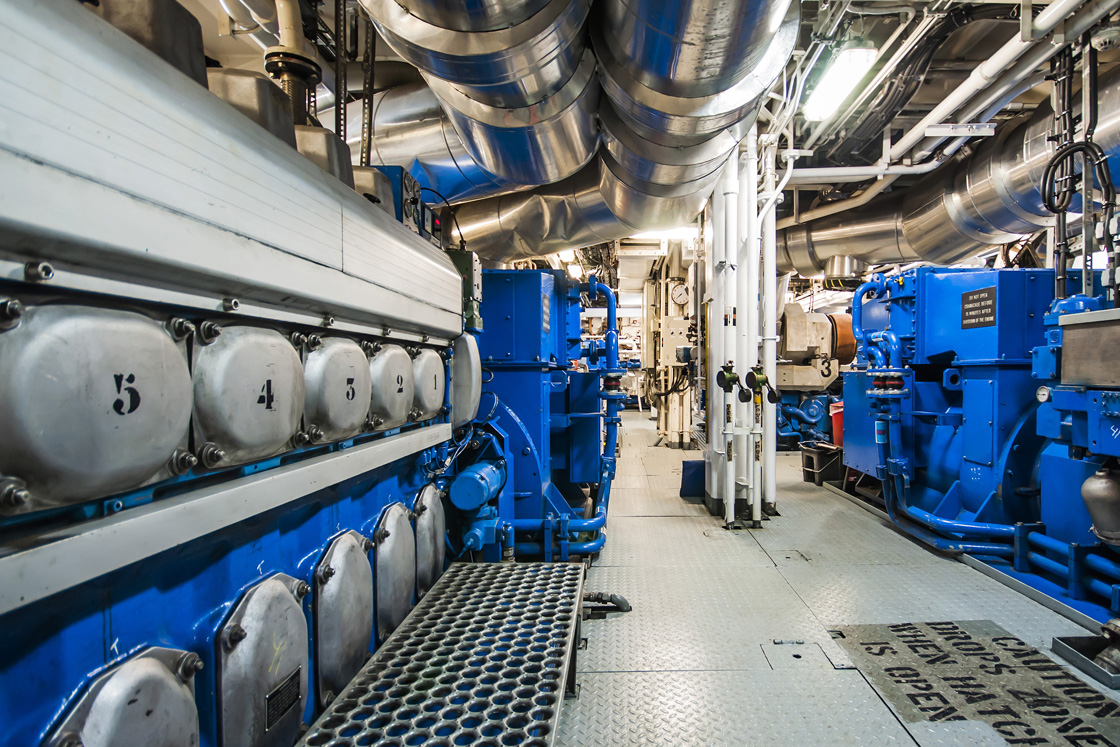
Shaft generator for optimal propulsion with PTO/PTI
Many long-haul vessels are still operating with direct diesel propulsion and no electric propulsion system at all. These vessels can improve efficiency and optimize main engine load power and emissions by adding a shaft generator/motor between the propeller and the main engine. This solution, called Power Take Out and Power Take In (PTO/PTI), is an electrical add-on which makes these vessels more efficient and even ready for hybridization. In hybrid vessels, a shaft generator/motor with AC-drive technology allows the optimum control of propulsion machinery at various speeds, which saves energy.
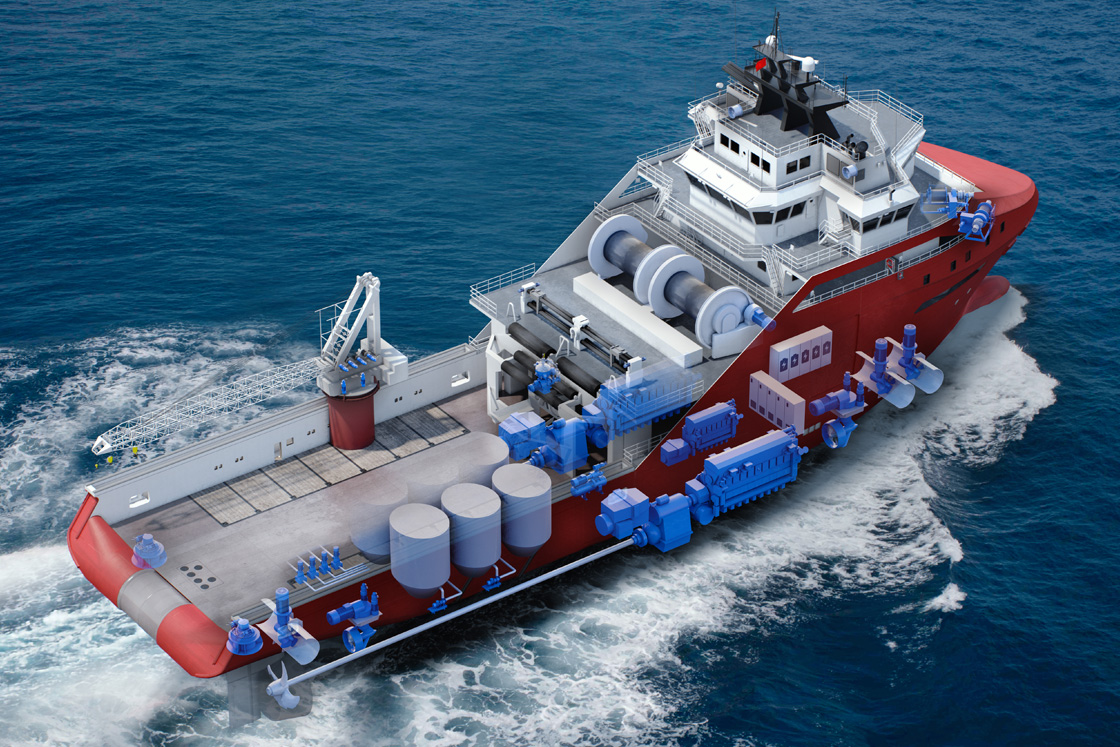
Clean hybrid propulsion
AC drives have key roles in hybridization and integration, and offer answers for the marine and offshore industries, which are looking for ways to reduce consumption of diesel oil and minimize emissions. A move towards using cleaner fuels like liquefied natural gas (LNG) is already in place. The future will be a move towards the operation of fully electric vessels. In the meantime, shipyards and vessel owners are investing more and more in marine hybrid systems to increase flexibility in design and installation, optimize operational performance and minimize the environmental impact. Many vessel types from small shuttle ferries to huge aircraft carriers can utilize hybridization technology for a more efficient and cleaner performance.
The benefits are clear business drivers:
- improved vessel performance
- reduced emissions
- lower operating costs due to lower fuel consumption
- lower maintenance costs related to diesel engines
- reduced noise levels
- improved long-term efficiency of the power supply system
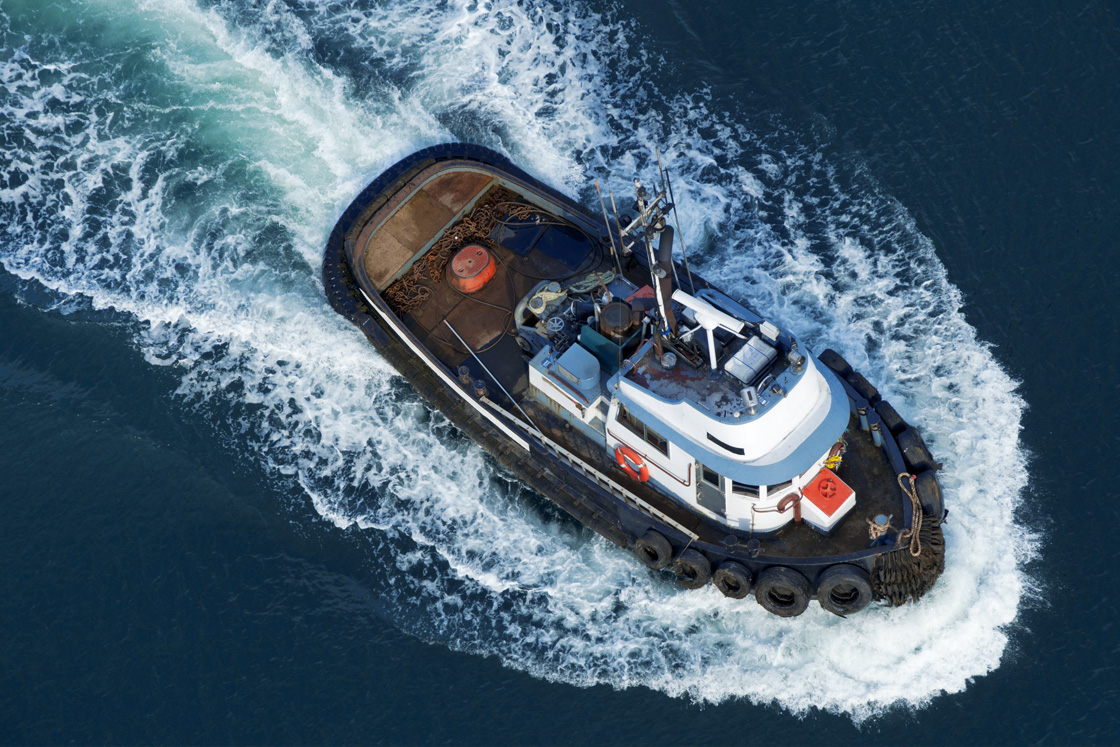
How hybridization works
Hybridization utilizes AC drives in the form of power conversion and grid converter technology. VACON® drives are in place when hybridized energy production is used with generators, and hybridized loads is used, for example, with propulsion and cranes.
Hybrid vessels run using two or more power sources: Main engines and generators are usually combined with integrated energy storage in the form of batteries or super capacitors. The intention is first to hybridize either the energy production to ease up the main engine optimization and secondly to hybridize all machinery consuming the energy to optimize machine behavior.
The marine and offshore industry recognizes the potential of using hybrid power and innovative propulsion systems. They reduce emissions and improve fuel consumption while extending engine maintenance intervals and engine life. With hybrid solutions, it is even possible to reduce the size of the engine, saving investment costs and space on board.
In energy production, the flexibility comes in the form of ‘time’. Energy storage gives time for generation to react to changes in loading conditions in an optimal way. On the load side, loading behavior is not reliant on generation and is ‘time’ constant.
Proven feedback and design targets from operating hybrid vessels has shown that using multi-source energy solutions to power vessels can reduce fuel consumption by 20–30%. You can choose to stop a diesel engine and run on battery or a smaller generator, or disconnect the battery or generator and start the engine again.
In the case of special vessels like tugs and support vessels, for example, they spend a lot of their service time idling with the main engines running and ready to respond, but no power is actually being used for propulsion. With hybrid solutions, batteries and smaller diesel generators can be used to provide energy to the vessel when it is idling, in standby operation, while harbor maneuvering or transiting short distances. A similar process can be used with regard to ferries operating in start/stops and scheduled routes. With regard to dynamic positioning, batteries can be used to provide the power for propulsion until the additional main engine is started and accelerated to provide long-term power for propulsion.
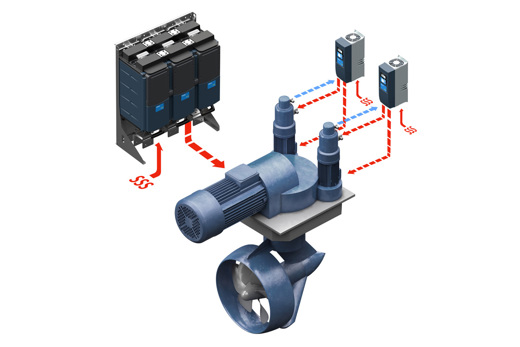
Thruster control for precision maneuvering
Precise maneuverability in all seas is what you need from a thruster, and that is what Danfoss drives deliver, with their high torque capabilities and fast, accurate performance.
Danfoss drive controlled variable speed propellers with fixed pitch are typically 20-30% more energy efficient than fixed-speed variable-pitch propellers – which waste approximately 20% of the power at zero thrust.
Frequency-controlled variable-speed propellers use 50% less energy than hydraulic variable-speed propellers. The need for special motor preheat function eliminates an anti-condensation heater.
Electrically-steered azimuth thrusters deliver more accurate control and respond more quickly than a hydraulic steering system. A minimum of two parallel motors and drives are always in use. If one combination stops, the steering system continues to operate.

Steering gear
With variable-speed control, you can achieve accurate rudder positioning, enabling a precise analog control system. In rotary-vane steering gear with reversible hydraulic pumps, use a VLT® or VACON® drive to change speed and direction, saving energy by only running when the vessel is changing course.

Hybrid efficiency in bulk carrier shipping propulsion
A hybrid diesel-electric propulsion retrofit has paid off fast for this dry cargo bulk carrier business.
Products
-
if (isSmallPicture) {


 iC7-Marine
iC7-MarineEnter a new dimension of opportunities with this ultra-compact drive. As well as high power density, iC7-Marine gives you a powerful combination of intelligence and shaft performance, ready for the most challenging of applications.
-
if (isSmallPicture) {


 iC7-Hybrid
iC7-HybridThe iC7-Hybrid power converter is your ticket to join the energy transition. Tap into energy savings with hybrid and pure electric solutions in marine power conversions. Enhance smart grid applications such as energy storage, shore supply, charging and electrolysis.
-
if (isSmallPicture) {


 VACON® NXP Air Cooled
VACON® NXP Air CooledDesigned for a broad range of demanding applications, focusing on higher power sizes and system drives.
-
if (isSmallPicture) {


 VLT® AutomationDrive FC 301 / FC 302
VLT® AutomationDrive FC 301 / FC 302The VLT® AutomationDrive FC 301 / FC 302 is designed for variable speed control of all asynchronous motors and permanent magnet motors. It comes in a standard version (FC 301) and an advanced high dynamic version (FC 302) with additional functionalities.
-
if (isSmallPicture) {


 VACON® NXP System Drive
VACON® NXP System DriveConfigured and assembled to meet your needs whether you need to control one or several motors.
-
if (isSmallPicture) {


 VACON® NXP DCGuard
VACON® NXP DCGuardVACON® NXP DCGuard™ delivers reliable short-circuit protection of DC grids for full selectivity between DC grids, and ensures fast disconnection in the event of a fault.
-
if (isSmallPicture) {


 VACON® NXP Grid Converter
VACON® NXP Grid ConverterAir- and liquid-cooled drives specifically designed for smart grid, energy storage, green hydrogen, power conversion and marine energy management applications.
Case stories
-
if (isSmallPicture) {


 World’s first ferry powered by iC7-Marine: Aurora Botnia
World’s first ferry powered by iC7-Marine: Aurora BotniaFINLAND: The Aurora Botnia cargo and passenger ferry is equipped with a hybrid-electric propulsion system, powered by liquid-cooled iC7 drives from Danfoss.
-
if (isSmallPicture) {


 VACON® drives electrify passenger ferries in Oslo Fjord
VACON® drives electrify passenger ferries in Oslo FjordNORWAY: Electrification of the Nesodden ferries has reduced CO2 emission in the port of Oslo. VACON® drives and power converters play a key role onboard.
-
if (isSmallPicture) {


 Decarbonizing the next-generation training ship, Skulebas
Decarbonizing the next-generation training ship, SkulebasNORWAY: The new training vessel at Maløy Fishing School uses less diesel and emits less CO2, while also meeting the rigorous demands of the fishing industry.
-
if (isSmallPicture) {


 Where smart ferry charging begins with a smart grid
Where smart ferry charging begins with a smart gridNORWAY: The Hareid-Sulesund ferry operations have reduced CO2 emissions by 7000 tonnes annually with the introduction of electric vessels. In transitioning ferries from diesel to pure electric power, powerful onshore support is essential, in the form of reliable infrastructure for rapid charging capacity and stable grid supply. The systems on board and on shore act as a single system – a sophisticated and competitive system developed by Norwegian Electric Systems (NES) using Danfoss technology.
-
if (isSmallPicture) {


 Solar-powered river tours protect Krka National Park
Solar-powered river tours protect Krka National ParkCROATIA: Two fully-electric, solar-powered vessels powered by Danfoss drives ensure silent, sustainable tours through the waterways of the spectacular Krka National Park in Croatia.
-
if (isSmallPicture) {


 Royal IHC Scheldt River pioneers new environmental standards in dredging with flexible MV drives
Royal IHC Scheldt River pioneers new environmental standards in dredging with flexible MV drivesA Danfoss medium-voltage drive solution boosts an inboard dredge pump and increases energy efficiency with a small footprint, minimum weight and low volume - while being robust enough to withstand the harsh marine environment.
Contact us
For further information please contact us

